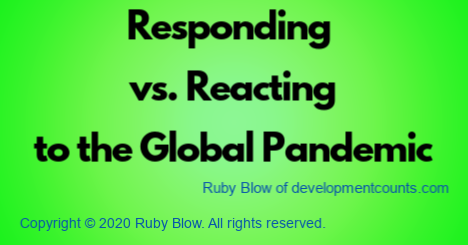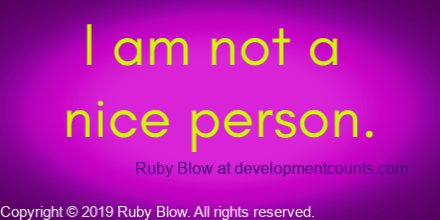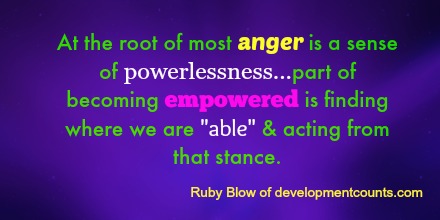What Were You Thinking?
Our culture is overly focused on thinking. The irony is that the depth of our exploration of our own thoughts and the thoughts of others often lingers on the surface of our potential understanding, when we focus too much on thinking and not enough on feeling. For example we ask questions like:
- “What were you thinking?” and…
- “Why did you do that?”
Yet those types of questions often lead us to a brick wall of resistance. The questions are akin to “why” questions and on some level “why” suggests you must “justify yourself.”
You must explain and justify how you came to be who you are and then explain it effectively. All while being emotionally and/or physically upset or hurt.
How to Respond When Someone is Upset
Quite simply put, there are multiple levels of communication. We communicate via:
- our actions;
- our emotions;
- our words;
- and our sensed communication and expression.
When someone is upset, let us approach them more frequently with the stance that focuses on feelings. To achieve this effectively, we must do more than ask the question “How do you feel?”
It is far more effective to address a “heart” problem on a “heart” level.
There is a reason that people are so much more comfortable describing their thoughts. We have more precise language and all sorts of logic models for thinking. In fact, we presume that thinking comes first and feelings come second.
As a result we – helping professionals in particular – think…“if I intervene with this thought, I can stop this negative spiral.” Of course helping others to change or adjust their thinking can ultimately shift mood states and feelings. However, there is a growing field of research that suggests that shifting emotions first is a viable path toward well-being.
The HeartMath Institute
Take a look at this statement from the HeartMath Institute’s book “Vol. 2 Science of Heart: Exploring the Role of the Heart in Human Performance”. This excerpt is from Chapter 2, “Resilience, Stress and Emotions”:
“The neural connections that transmit information from the emotional centers to the cognitive centers in the brain are stronger and more numerous than those that convey information from the cognitive to the emotional centers. This fundamental asymmetry accounts for the powerful influence of input from the emotional system on cognitive functions such as attention, perception and memory as well as higher-order thought processes. Conversely, the comparatively limited influence of input from the cognitive system on emotional processing helps explain why it is generally difficult to willfully modulate emotions through thought alone.”
In other words, our body’s emotional information system (the nervous system) informs the brain more rapidly and than our brain can transform our emotional experiences.
If we are to begin to communicate from a place of emotions first, we could ask ourselves:
- What is this person conveying in their words, body language, and actions… about what they are feeling?
- How does what they are feeling make me feel? What am I noticing in my self?
- How can I use my emotionally present self to help the person I’m with regulate their emotion; be present with their pain and cultivate new way of being.
Somehow, we have gotten the idea that it is impolite to acknowledge someone’s emotions. We don’t want people to get “too upset,” or we want people to “pull it together.” Perhaps this is because emotions have a contagious effect on others.
So the emotionally expressive person has to go to ever increasing heights of expressing their anger, hurt, sadness or disappointment in order to illicit some response that says “I see you” and “I do not shirk from your pain.”
We not only fail to adequately “sit with” people’s pain, we can also be woefully incompetent in celebrating people’s joy. Some people harbor the belief that too much celebration of a good thing can “jinx” their happy circumstance and sabotage their success.
The message in our larger culture is that “people are jealous of you” or “people don’t believe you can do it!” The basic premise of these statements implies that your happy feelings and celebrations will illicit ill will from others.
Ultimately, we have to be cautious with expressing feelings of upset (sadness, grief, anger, disappointment, frustration etc…) But also “don’t be too content.” You have to be ready just in case something goes wrong.
What to Say When Someone is Upset
When someone is upset great questions to ask include:
- What do you need?
- How can I support you?
- What might bring you comfort?
We may or may not be able to fulfill those needs, but we can help people determine those in their circle of support.
We may be able through our relationship with them to experience what support feels like. Thereby creating a more secure view of people (others) and shift generally negative experiencing to positive experiencing.
We can also assist people with cultivating relationships that offer comfort, encouragement, understanding and relief from the isolation that is a natural response to feeling hurt or angry.
In action this can be as simple as the following exchange:
Other (saying): “No one gets it…I may as well keep to myself!”
You (saying): “Being misunderstood feels terrible…sometimes being alone feels like the right solution.”
Other (thinking/noticing): “Wow I don’t have to explain myself. It seems like he/she “get’s it”
You (being/thinking): “I am here with you now, you are not alone.”
This type of dialogue results in more “attuned communication.” This can be defined as a “felt sense of the other’s presence.”
How to Be When Someone is Upset
Try being with the upset person without pushing too hard for a preferable mood state. Don’t succumb to the depressed or negative mood yourself and don’t try too hard to rip it away. The message in your actions is…
- “This is tolerable,”
- “I am not leaving you,”
- “It’s okay, you’re okay.”
The Neuroscience of Attachment
The neuroscience of attachment informs us that attachment and relationships alter the neurobiology and structure of the brain. Neurons are specialized cells. Their function is to transmit information via electrical impulses. The brain is made up of interconnected neurons.
So when people have new supportive and positive experiences in their relationships with others, new neural pathways develop. We are social beings and the brain needs social interaction.
We’ve all heard the phrase “use it or lose it.” A person who is isolated from others, like neurons that are not being used or “fired,” will die off. We need social support and presence to thrive.
While we can say to the upset person, “You don’t need to be alone right now,” they are likely better served by our presence.
- New experiences,
- new choices,
- new learning,
- and the the expansion of feelings often repeated support new neural pathways.
Our states of feeling, being and thinking can be altered with consistency and relational connection with a healthy other.
Copyright © 2016 Ruby Blow. All rights reserved.
Share your thoughts on Linkedin, Facebook, Twitter
Sources (read more):
http://lindagraham-mft.net/resources/published-articles/the-neuroscience-of-attachment/





